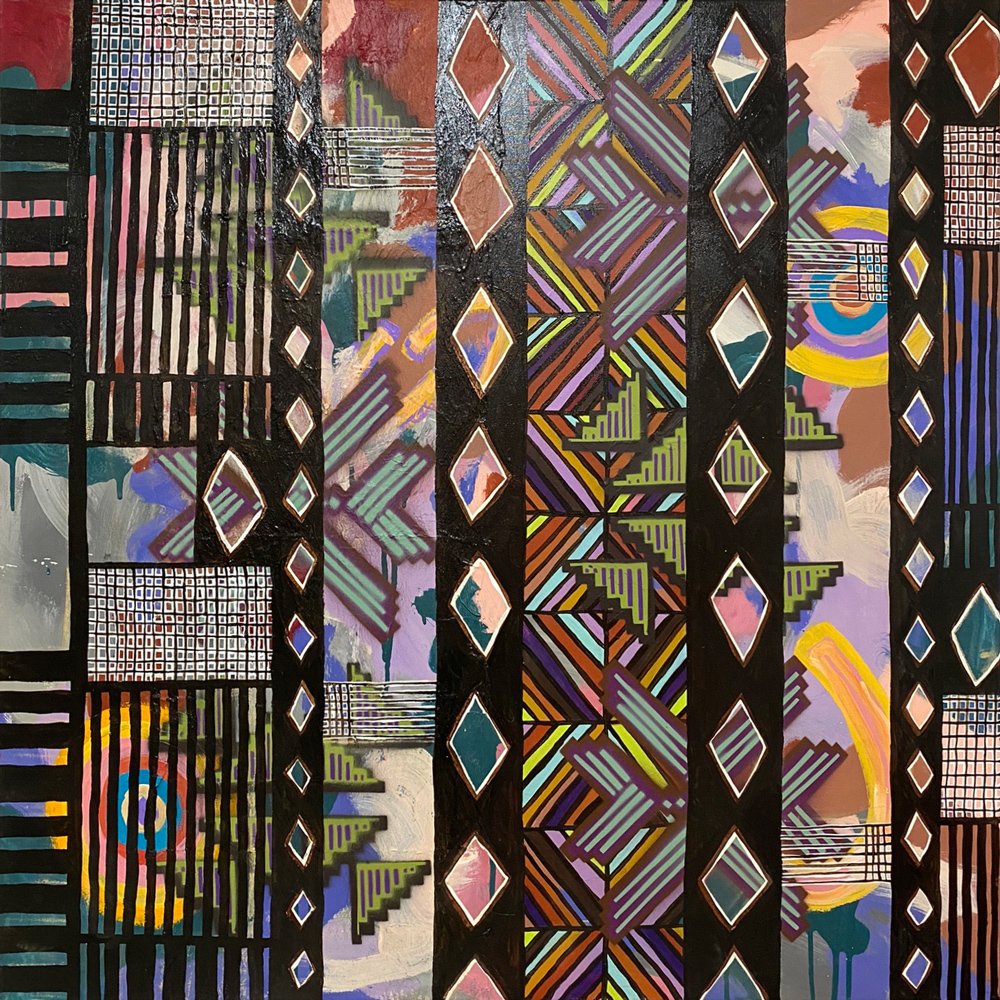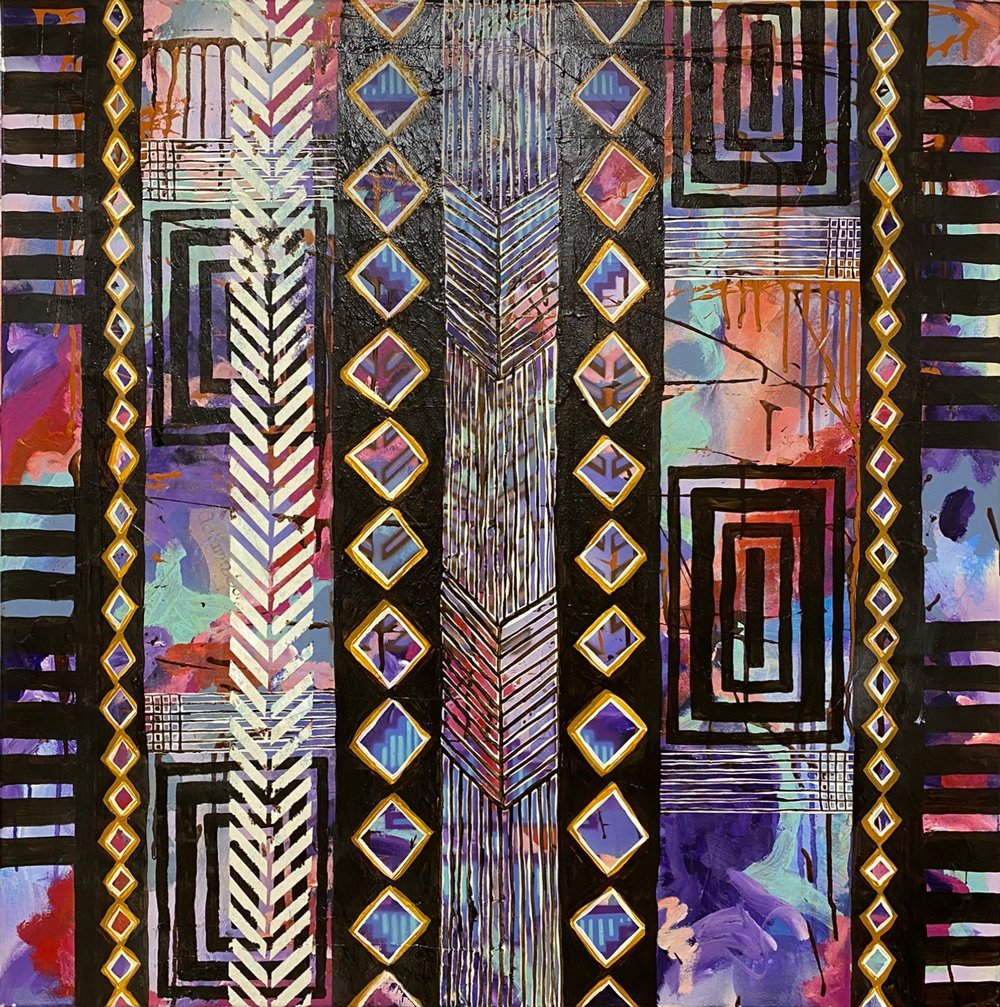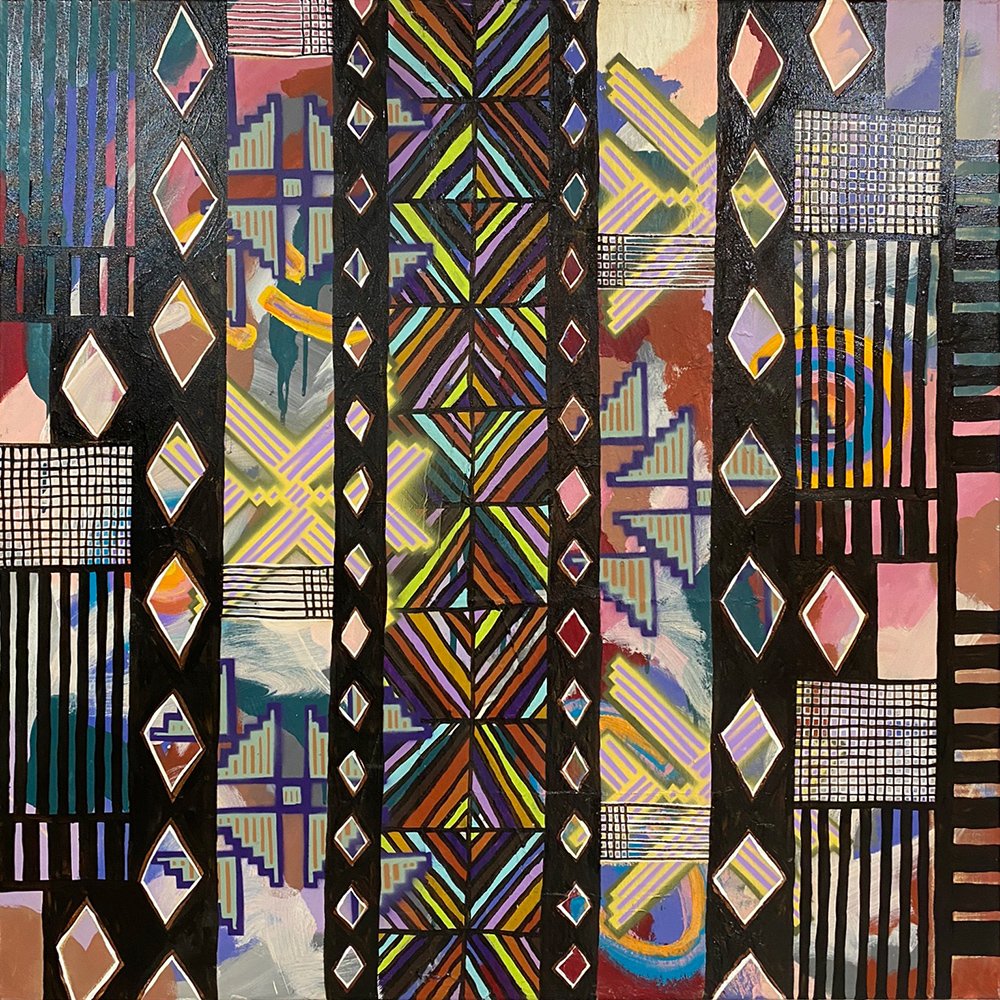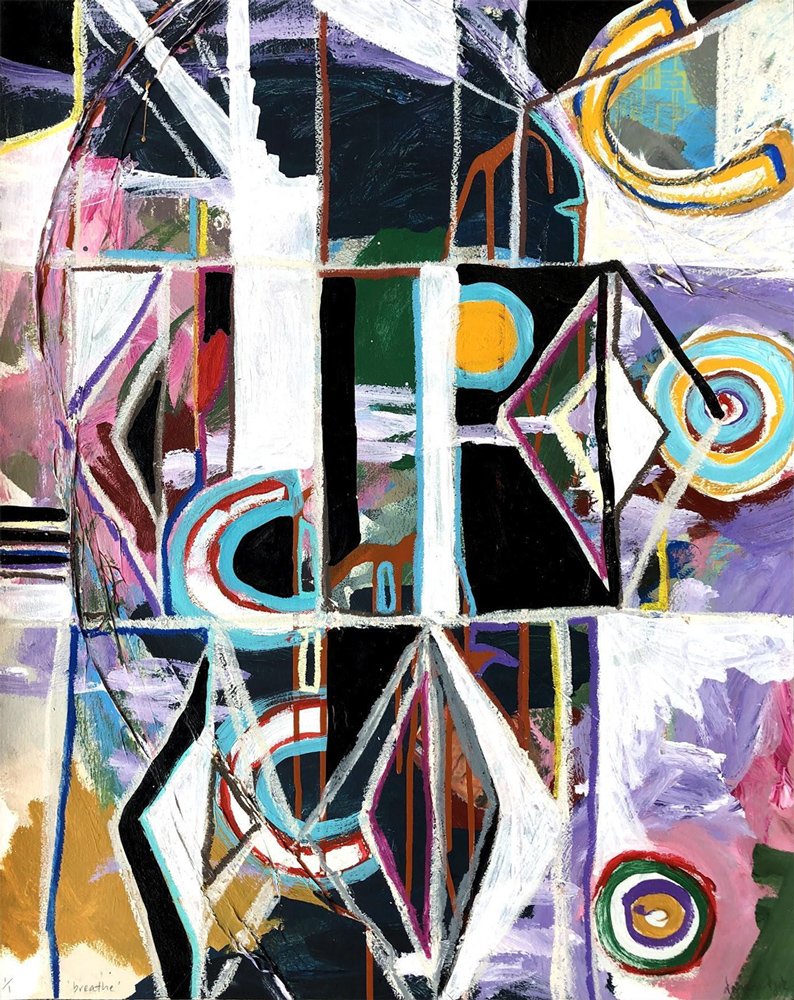Dagmar Dyck
Dagmar Vaikalafi Dyck (born 1972) is a New Zealand artist of Tongan and German descent. Dyck's paintings are often inspired by her cultural heritage and explore textile practices of Tonga. Dyck's inspirations come from Tonga’s textiles arts, which includes bark cloth mats, baskets and clothes.
Dagmar is an interdisciplinary artist and primary trained educator, specialising in visual arts. She has regularly exhibited nationally and internationally, with work held in significant national collections. The notable exhibition ‘Amui ‘i Mu‘a – Ancient Futures, was part of the 2021 Auckland Art Festival and showcased the creative outputs of her involvement as Investigator artist on a five-year Royal Society of New Zealand Marsden Fund project; Ancient Futures: Late 18th and early 19th century Tongan arts and their legacies (2017-2021). Dagmar’s Master’s research involved examining art teachers’ beliefs, attitudes and pedagogical practices and how these could affirm Pasifika students’ success as Pasifika. It also entailed exploring how Pasifika students’ success was enacted through their art works and stories. She holds several governance roles and is a Council Board member (Ministerial Appointment) for The Teaching Council of Aotearoa, New Zealand and sits on the NCEA Pacific Peoples Review Panel for the Ministry of Education and the Pacific Advisory Group for Tāmaki Paenga Hira, Auckland War Memorial Museum. In 2012, Dyck was co-curator of No'o fakataha, a group exhibition of Tongan artists.
“I am a first generation New Zealand-born child of the 70s. As an immigrant family I learned from an early age an appreciation of custom and tradition, both Tongan and German. Without being raised with either language, these traditions became critical connectors to my cultures. Sadly, I don’t recall my maternal grandparents as both died before I turned the age of five. I am my grandmother’s namesake and I often wonder how different my life may have been had she been around to speak Tongan to me.
“Navigating the cultural invisibility I experienced during my secondary years, the art room became my safe space to explore further connections. My art became the vehicle for my ‘voice’. Much of my initial art exploration in the 1990s critiqued the illustrative plates and engravings from the Pacific voyages of scientific exploration. As I progressed in my practice I wanted to examine themes of materiality, and the construction methods within Tongan feminine art forms, called koloa. The aesthetics of pattern and design within early Tongan koloa inspire in me a deep admiration for the skills and intelligence of my ancestors.
“Recent museum visits across the world have afforded me a very personal and emotional connection to my heritage and the artists of hundreds of years ago which I desire to share and express with my own artwork. I may not speak fluent Tongan but translating and galvanising this traditional and ancestral knowledge into contemporary art forms is my personal response to ‘being Tongan’.”






